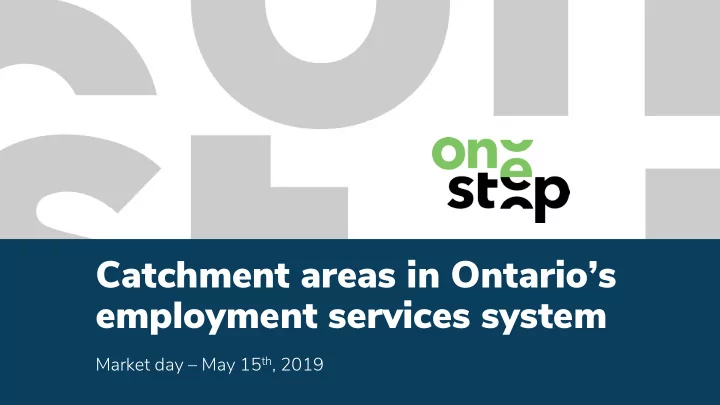

Catchment areas in Ontario’s employment services system Market day – May 15 th , 2019
Outline • Who is ONESTEP • Criteria for defining catchment areas • Comparative look at BC model • Ontario’s proposed approach • Considerations 2
Ontario’s umbrella organization ONESTEP is the only umbrella organization that encompasses the entire workforce development sector • ...a ...a par partner i in res esearch • ...a ...a bui builde der o of pr prac actice • ...a v ...a voice f for the s e sec ector we support our Members we provide training and we engage cross- with data, research, and professional development sectorally to increase the evaluations supports opportunities for our visibility of, and leverage Members new resources for, our Members 3
Defining catchment area criteria • client populations/density • nature/type of services required • economic feasibility • service point analysis • labor shed/market needs analysis 4
British Columbia 45 catchment areas • geographic blocks based on community • health service areas estimated working age population: • -average: 85,966 - range: 15,376 – 242,2938 estimated land area: • - average: 21,062 km^2 - range: 17 – 221,625 km^2 estimated maximum annual budget*: • - average: $5.53 Million - range: $1.46 – 13.25 Million 5
Ontario 15 catchment areas • geographic blocks based on economic • regions and census divisions estimated working age population: • -average: 735,899 - range: 187,740 – 2,294,790 estimated land area: • - average: 65,781 km^2 - range: 634 – 582,476 km^2 estimated maximum annual budget*: • - average: $49.51 Million - range: $10.41 – 178.86 Million 6
Considerations for Ontario trina@onestep.on.ca
Recommend
More recommend